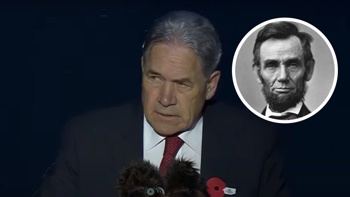Environmentalists have called for an end to commercial whitebaiting.
Forest & Bird freshwater advocate Annabeth Cohen said ending the sale of whitebait would help alleviate the pressure on the struggling native fishes.
"Until whitebait and their habitats are thriving, it makes no sense to allow companies to sell these fish for a profit, especially when four out of five of the species are at risk of disappearing forever," Cohen said.
"We also need better controls on recreational whitebait catches. Most people don't know there isn't a catch limit for native freshwater fish."
Cohen argued it was time for authorities to take action on protecting and restoring wetlands and rivers, ending commercial catches, improving water quality, and putting recreational catch limits in place.
"Regulation isn't doing much to protect whitebait. Currently, it is illegal to sell trout but not whitebait," she said.
"Native fish aren't even protected under the Wildlife Act. New Zealand's freshwater fish deserve better."
"Whitebait used to be so plentiful they were caught by the truckload and used for fertiliser on farms.
"When we have returned whitebait back to these population levels, we'll know we've done a good job of caring for our native freshwater fish, and their rivers."
Today, migratory galaxiids kōaro, shortjawed kōkopu, banded kōkopu, giant kōkopu and inanga made up the whitebait catch.
The shortjaw kōkopu was classified by the Department of Conservation (DoC) as "threatened", while the giant kōkopu, kōaro and inanga were "at risk-declining".
The banded kōkopu was not threatened.
DoC freshwater scientist Jane Goodman said whitebaiting regulations, which covered net type and size and permitted fishing times and locations, were first put in place in 1894 as a conservation measure to prevent overfishing and allowed whitebait to move upstream to grow into adults.
"Habitat degradation is one of the key causes of declining whitebait populations," Goodman said.
"We encourage people to get in behind local initiatives to restore spawning and adult whitebait habitat and to reduce their impact on our freshwater environment."
This year, DoC had worked with Niwa to develop and publish national fish passage guidelines for structures in waterways to prevent barriers to freshwater fish migration.
People who saw overhanging culverts or other barriers that stopped whitebait moving upstream were asked to please contact their local DoC or regional council office.
DoC would be patrolling whitebaiting sites and talking to whitebaiters throughout the season to ensure people were complying with the regulations.
Illegal whitebaiting carried a maximum fine of $5000 and equipment could be seized.
Take your Radio, Podcasts and Music with you









